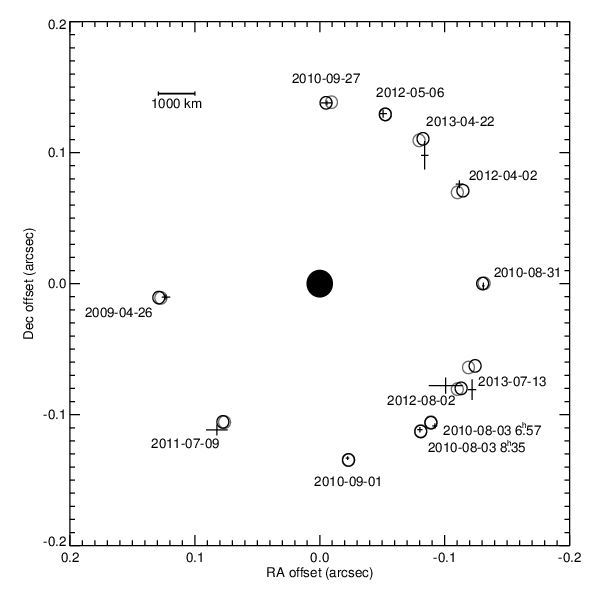
The Mutual Orbit, Mass, and Density of the Large Transneptunian Binary System Varda and Ilmarë
Published in 2015: Icarus 257, 130-138.
W.M. Grundy1, S.B. Porter2, S.D. Benecchi2, H.G. Roe1, K.S. Noll4, C.A. Trujillo5, A. Thirouin1, J.A. Stansberry6, E. Barker6, and H.F. Levison2.
(1) Lowell Observatory, 1400 W. Mars Hill Rd., Flagstaff AZ 86001.
(2) Southwest Research Institute, 1050 Walnut St. #300, Boulder CO 80302.
(3) Planetary Science Institute, 1700 E. Fort Lowell Suite 106, Tucson AZ 85719.
(4) NASA Goddard Space Flight Center, Greenbelt MD 20771.
(5) Gemini Observatory, Hilo HI 96720.
(6) Space Telescope Science Institute, Baltimore MD 21218.
Abstract
From observations by the Hubble Space Telescope, Keck II Telescope, and Gemini North Telescope, we have determined the mutual orbit of the large transneptunian object (174567) Varda and its satellite Ilmarë. These two objects orbit one another in a highly inclined, circular or near-circular orbit with a period of 5.75 days and a semimajor axis of 4810 km. This orbit reveals the system mass to be (2.664 ± 0.064) × 1020 kg, slightly greater than the mass of the second most massive main-belt asteroid (4) Vesta. The dynamical mass can in turn be combined with estimates of the surface area of the system from Herschel Space Telescope thermal observations to estimate a bulk density of 1.24 +0.50 -0.35 g cm-3. Varda and Ilmarë both have colors similar to the combined colors of the system, B-V = 0.886 ± 0.025 and V-I = 1.156 ± 0.029.

Fig. 2. Observed positions of Ilmarë relative to Varda are indicated by points with error bars, labeled according to observation date. The large black circle at the origin is sized to Varda's 361 km adopted radius. Open circles (sized to Ilmarë's 163 km adopted radius) show the positions from orbit solution 1 in black and solution 2 in gray.